The future of digital healthcare is here.
The time for transformation is now
Digitisation is at the forefront of most customer services, but for the NHS, there’s still work to do. We’re here to help accelerate this shift with innovative solutions that maximise productivity, efficiency, quality of care and ROI for Trusts across the UK.
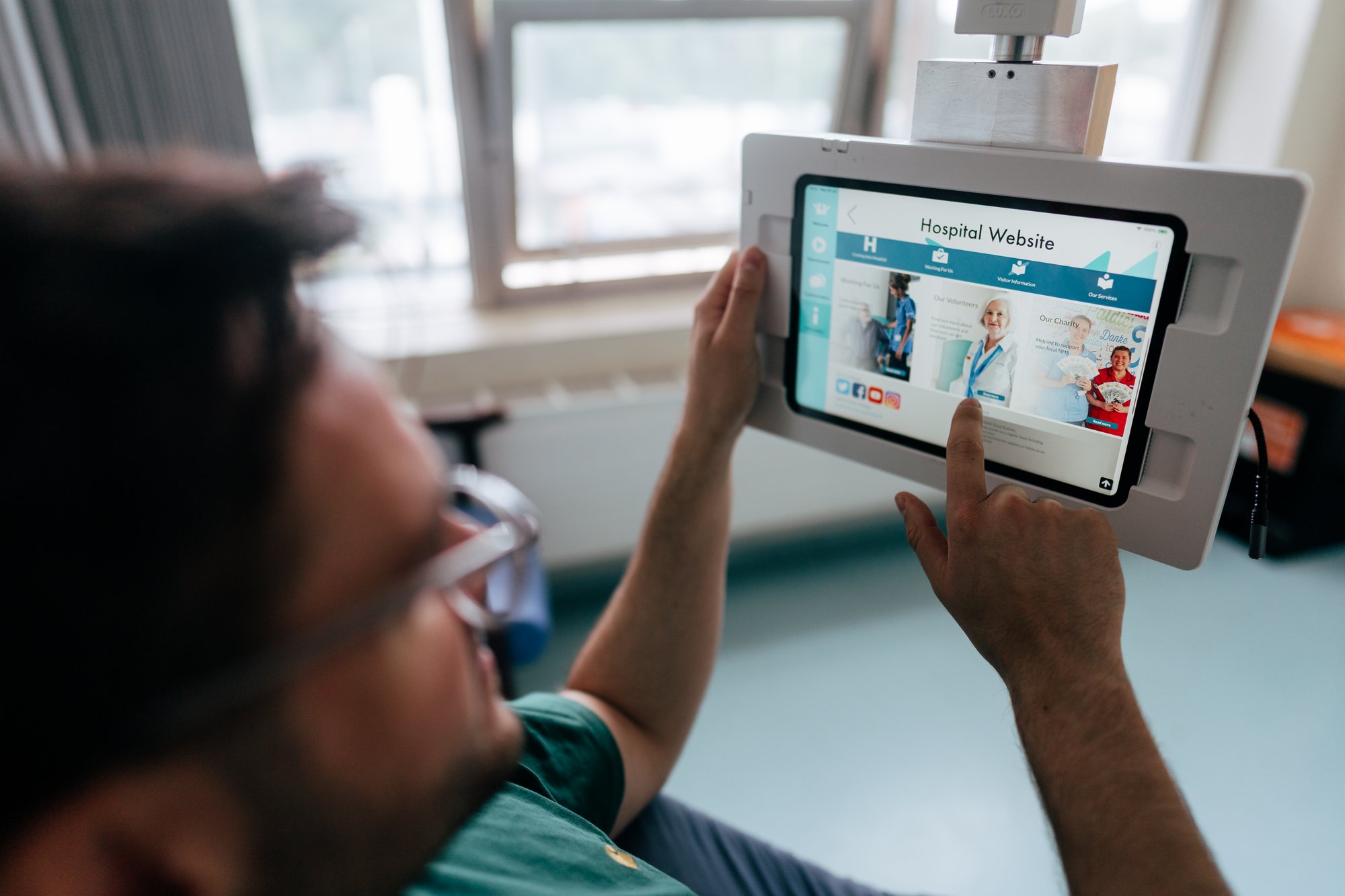

Digitisation has the power to take your Trust to the next level. Here's what the stats say...
22%
Compound level of growth rate (CAGR) expected between 2023 and 2081 as the number of WiFi-connected devices within healthcare rises. The use of WiFi CERTIFIED™ equipment therefore helps ensure widespread interoperability and a positive user experience.
55%
That’s a majority base of UK customers who now feel sharing some information to gain WiFi access is something they’re comfortable with.
6.3 billion
The total number of smartphone users predicted by 2029.
£2bn
Promised in the latest government budget for NHS technology and digital investment to increase productivity and save staff time.
7.57m cases
The total number of people on the waiting list for NHS treatment.
3.14 million
The number of patients waiting over 18 weeks for treatment.
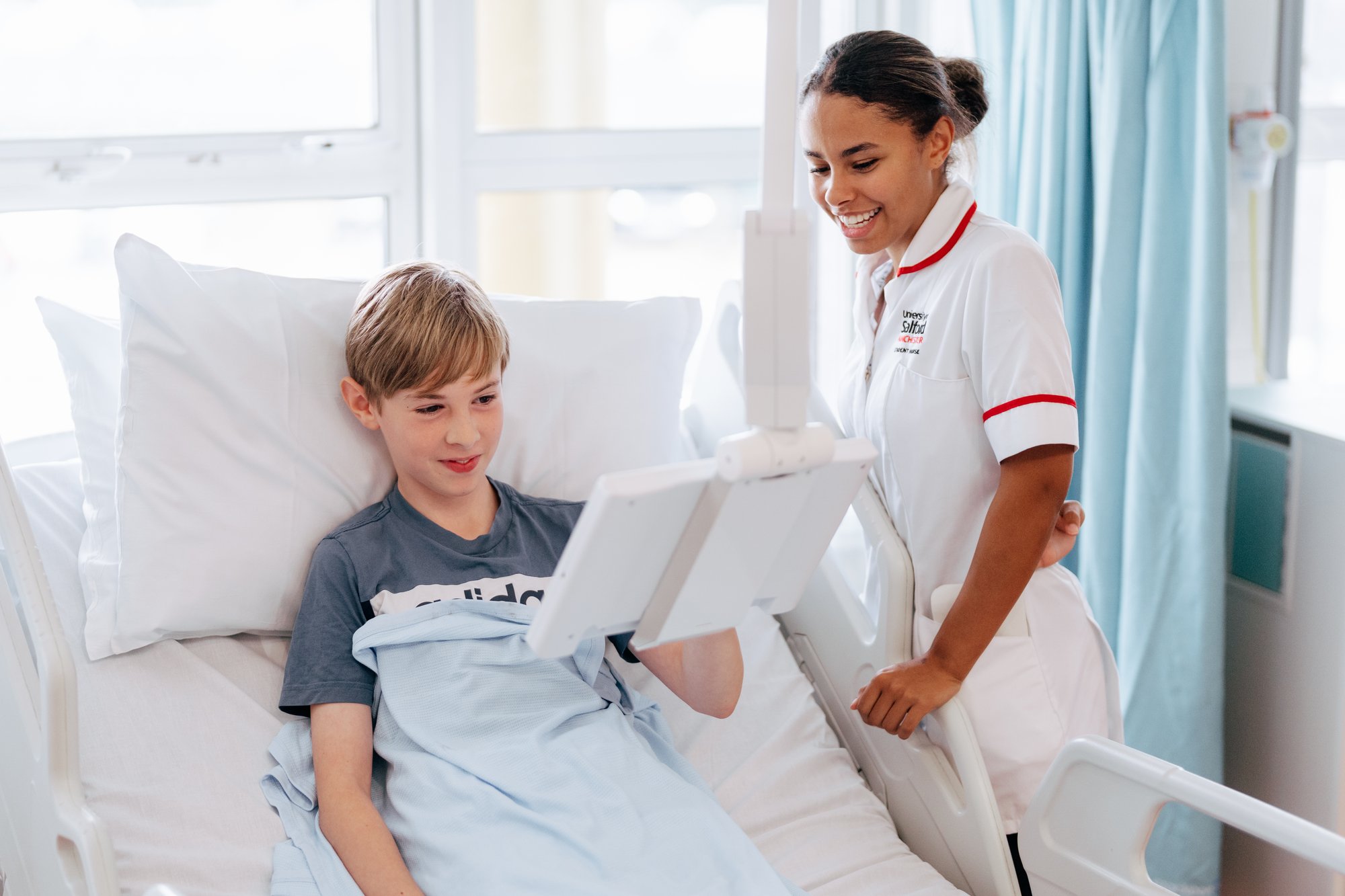
Easing NHS staff pressures and shortages
In the 12 months ending June 2024, the average sickness absence rate was 6.2%.
In February 2024, the most common reason for sickness absence was anxiety, stress, depression or other psychiatric illnesses.
The level of digital transformation driven by SPARK Fusion® makes the lives of frontline staff easier, with seamless solutions to increase productivity and reduce unnecessary wastage of time and resources, fostering a more supportive culture for staff wellbeing.

How SPARK Fusion® supports NHS staff
Increased efficiency
Thanks to the communication functionality of the bedside devices, staff have better-quality patient interactions, saving time and stress.
Better quality of care
Staff are empowered with the ability to provide better care. For example, they can use digital pain scoring at the bedside to treat non-verbal patients or even administer medication reminders remotely.
Reduced bed blocking
Better care means shorter treatment cycles, so staff are more equipped to deal with increased service demand and discharge patients more smoothly, responsibly and informed than ever before.
A way to win against wastage
SPARK Fusion®'s instant messaging and wider communication features lead to more efficient patient interactions.
This is currently limited to a single nurse call button in many Trusts, making requests ambiguous.
SPARK Fusion® accommodates more nuanced requests — everything from a glass of water to something more serious, requiring immediate attention. This reduces staff time wasted, as patients can be engaged more readily via the bedside device.
Empowering patient freedom
The number of malnourished people leaving NHS hospitals in England has risen by 85% over the past 10 years.
In many cases, this is due to rigid meal ordering, where patients are pressured to order ‘in the moment’, which can lead to them rejecting the food and wasting what arrives.
SPARK Fusion®’s digital meal ordering integration service gives patients more freedom and time over their selection and is individually linked to them – so if they’re discharged or moved, their meal choice follows them to a new bed and they don’t get stuck with another patient’s order.
Every ward is different with its own needs
Digital transformation with SPARK TSL isn’t accomplished with a one-size-fits-all approach. Our solutions can be customised down to ward-level, so every patient gets the personalised care they deserve.
Dementia
Dialysis
Physio
Patient education
Emergency department
Maternity
and many more
Dementia
Dementia patients are among some of the most vulnerable people in NHS hospitals.
SPARK Fusion® supports their treatment with access to the BBC archives to take comfort from precious memories of times past.

Dialysis
Patients who undergo this procedure often have to endure longer recovery times to ensure their wellness.
Thanks to access to high-quality bedside infotainment throughout their stay, this time doesn’t need to be any more painful than required.
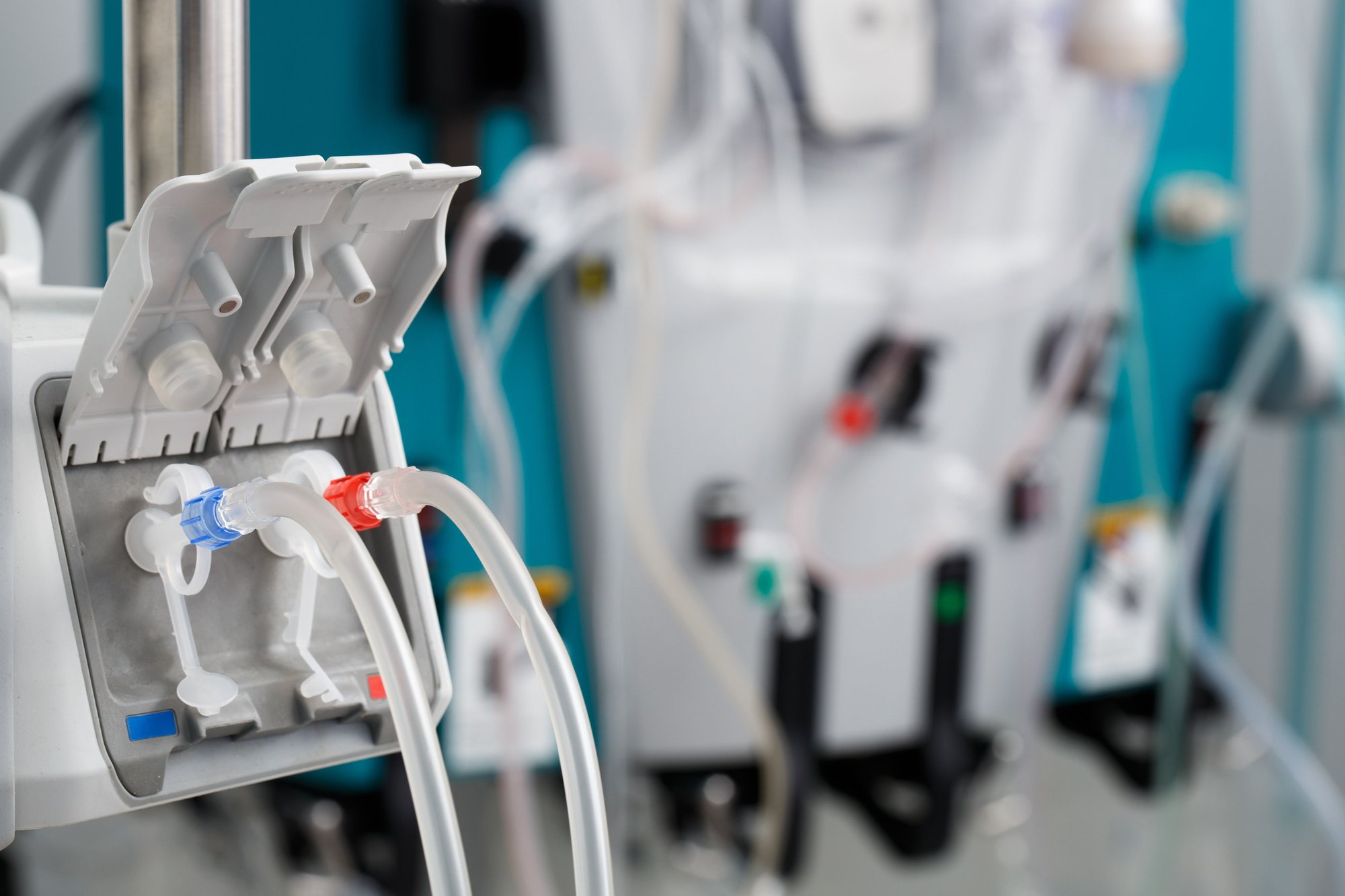
Physio
Physio is an essential treatment aspect and is prevalent across multiple wards.
That’s where SPARK Fusion®’s digital pain scoring feature comes in most usefully — empowering patients and staff with treatment and information beyond language barriers.

Patient education
Through SPARK Fusion®, relevant educational content can be customised to the patient's device depending on the ward.
While SPARK TSL’s hospital WiFi allows Trusts to engage patients with charity initiatives they wouldn’t normally be aware of.

Emergency department
The fast-paced nature of A&E means every second spent by staff is critical.
Digital transformation is essential in ensuring productivity and communication remain watertight, with enhanced patient processing through SPARK Fusion®, for example.
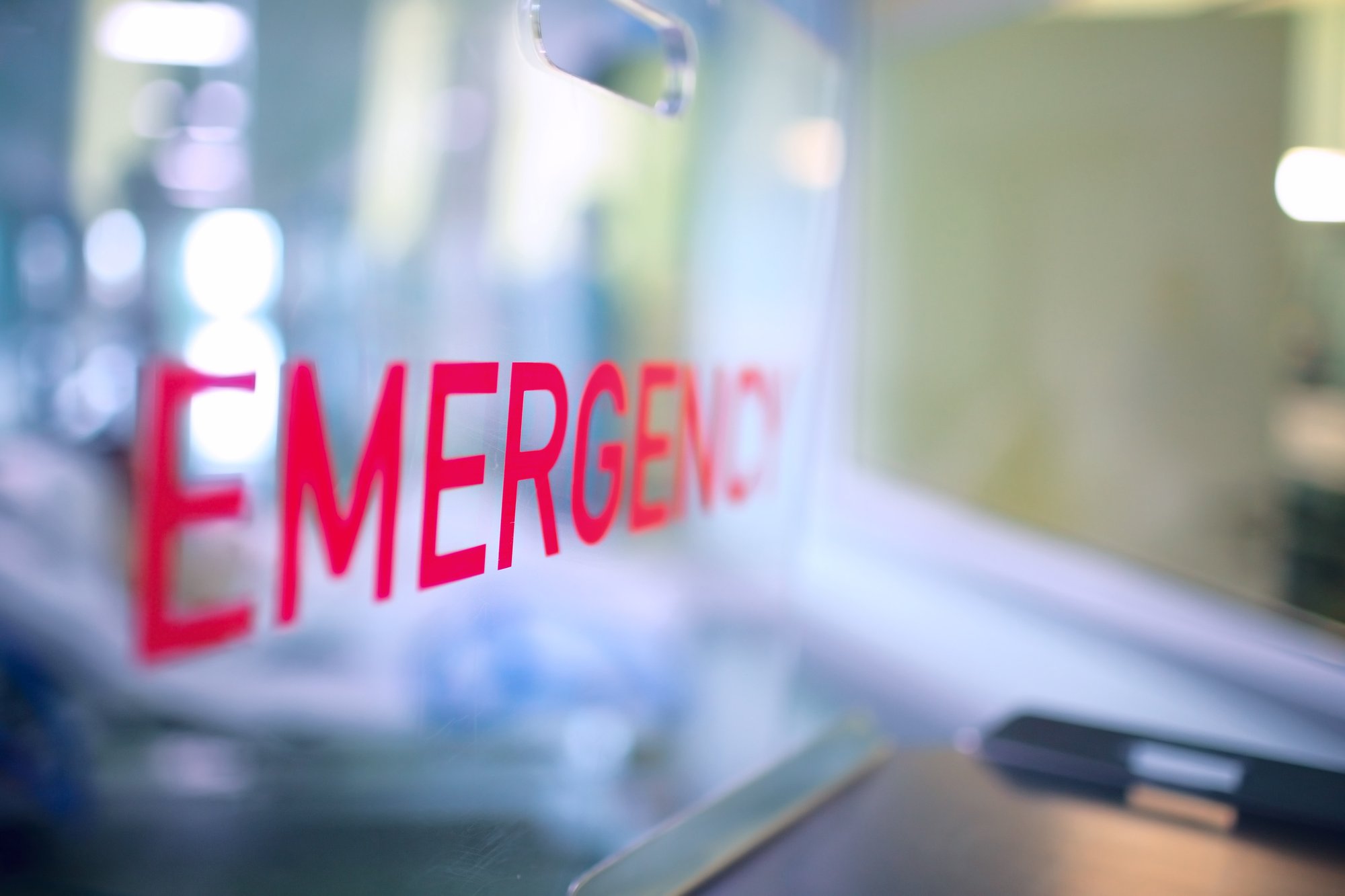
Maternity
Maternity wards represent the highest litigation drive throughout the NHS, heightened even further by the short-stay nature of patients.
SPARK Fusion® empowers midwives and patients with accessible information to support them beyond child-birth, signposting what to expect post-pregnancy and alleviating readmission and requirement on already stretched resources further down the line.

and many more
SPARK Fusion is tailored to individual wards based on the guidance you give us.
.png?quality=low&width=1080&height=1080&name=Untitled%20(13).png)
More digital healthcare naturally leads to greener healthcare
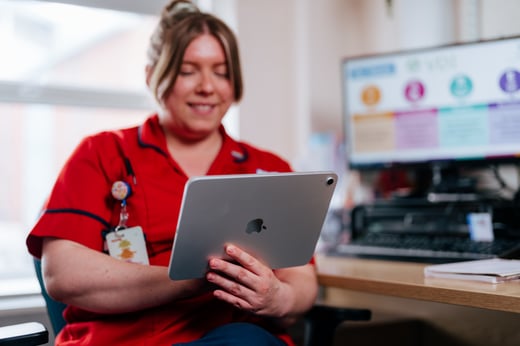
The mandate
Beyond productivity, efficiency and better-quality care, digitisation across healthcare services directly impacts the sustainability of Trusts across the UK. We pledge to support this mission throughout the NHS with a responsible consciousness and passion for creating a greener service for all.
SPARK TSL can help
We’re here to help your Trust meet its goals for sustainability. Prioritising digitisation is the best path to progress from outdated systems and processes that not only come at an unnecessary financial cost but also impact other meaningful resources.
The benefits of digitisation
1
No paper wastage required for meal menus, charity promotion leaflets, surveys and patient processing admin.
2
Reusable in-app services also mean less strain on physical resources from patient-to-patient or even visitor-to-visitor.
3
Less of a requirement for hardware disposal, as SPARK TSL can overlay existing wireless infrastructure on first installation.
4
Solutions like SPARK Fusion® rely on personal devices and low-energy bedside devices that don’t need to be plugged in at all times.


£230m
Estimated cost of hospital food waste per annum

Feeding the sustainability agenda
More considered meal ordering means less food wastage.
Throwing away food wastes the carbon emissions generated from growing, transporting and preparing it — and food waste itself costs the NHS an estimated £230 million per year, which is a staggering 39% of the total food budget.
Join a community working towards the digital transformation of healthcare
See all events






